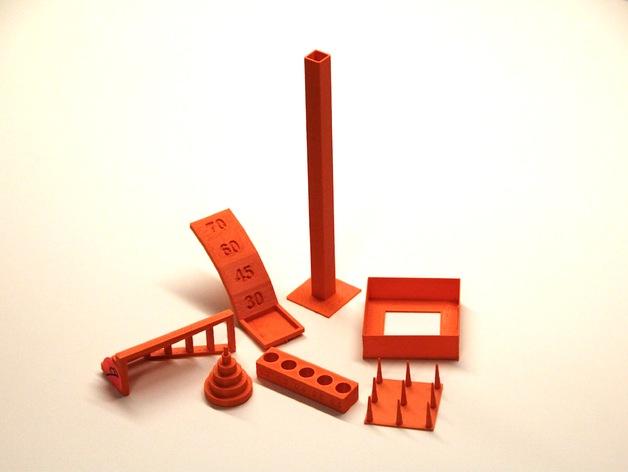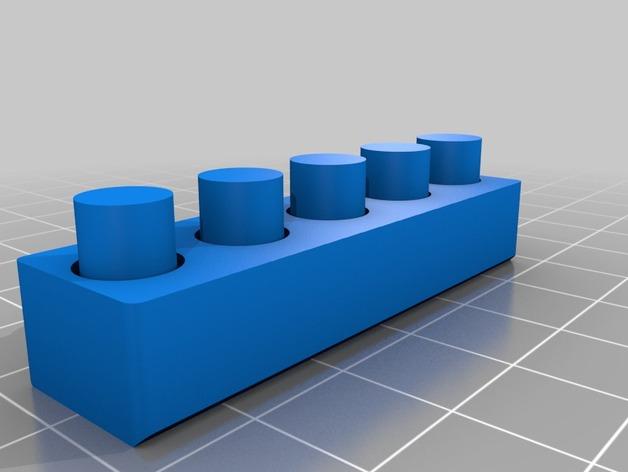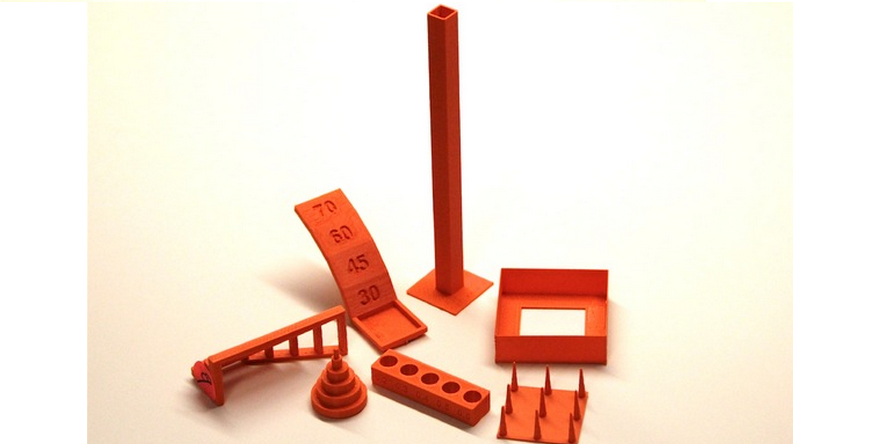 The quality of what your 3D printer is producing should obviously be measured by more than layer height, but it is easy to focus on that one aspect. With so much competition in the 3D printing marketplace, we should remember to delve deeper in exploring what type of print quality we are receiving. Recently, test model files were released from MAKE 3D Shoot Out 2015 so you can do just that.
The quality of what your 3D printer is producing should obviously be measured by more than layer height, but it is easy to focus on that one aspect. With so much competition in the 3D printing marketplace, we should remember to delve deeper in exploring what type of print quality we are receiving. Recently, test model files were released from MAKE 3D Shoot Out 2015 so you can do just that.
Andreas Bastian from the MAKE 3D Shoot Out 2015 testing team focused on looking at print quality under more of a microscope, to gain real quantitative data, with his new set of Fusion 360 designed test models. With the release of these files on Thingiverse, anyone can use the test models, and can share their information. That should lead to some very interesting conversations in the 3D printing community.
So exactly what fine details should we be looking into? When comparing 3D printing quality, the user needs to be aware of: 
- Dimensional accuracy
- Surface finish
- Overhang capabilities
- Deposition control
- Motion mechanics
- Motion control
- Material properties
- Slicing algorithms
What makes measuring these factors more complex though is that what you modify or change in one of the aforementioned aspects or qualities can relate to the others, as they are often entwined in the printed processes. What was necessary was for each of those ‘geometries’ to be measured individually in terms of quality, and Bastian provides that level of in-depth evaluation with a ‘more parametric and quantitative assessment of print quality than could be achieved by comparing any number of more traditional printed models.’
Bastian recommends that for looking at performance of the printer, software, and materials you should print the models using either default or medium settings, which should be a layer height of 0.2 mm, and default speeds and temperatures. It’s very important to note also that if you are measuring quality data from multiple machines, use the same printing materials for each one for consistency. Click here for a detailed, technical list of what you should be looking for in each item being evaluated.
You are invited to make an “I Made One” button, and your results are welcome for sharing, provided you include:
- Photo(s) of your completed test prints
- Machine make and model
- Slicer and slicing settings (layer height, number of shells, print temperature, extrusion multipliers, speeds)
- Print time
- Filament source
All 26 machine reviews were published in Make’s Annual Guide to 3D Printing 2015 (Volume 42). Will you be producing an “I made one” button? Please let us know, as well as sharing your thoughts regarding the 3D printed models used for measuring 3D printer quality in the 3D Printer Quality Testing forum at 3DPB.com.
A few more previews of the print accuracy tests:
Subscribe to Our Email Newsletter
Stay up-to-date on all the latest news from the 3D printing industry and receive information and offers from third party vendors.
You May Also Like
Nylon 3D Printed Parts Made More Functional with Coatings & Colors
Parts 3D printed from polyamide (PA, Nylon) 12 using powder bed fusion (PBF) are a mainstay in the additive manufacturing (AM) industry. While post-finishing processes have improved the porosity of...
3DPOD Episode 193: Flow and What’s Possible in 3D Printing with Ricky Wildman, University of Nottingham
Ricky Wildman is working on 3D printing pills, but, as Professor of Multiphase Flow and Physics at Nottingham, he does a whole lot more. His research encompasses the characterization of...
3D Printing Webinar and Event Roundup: March 17, 2024
It’s another busy week of webinars and events, including SALMED 2024 and AM Forum in Berlin. Stratasys continues its in-person training and is offering two webinars, ASTM is holding a...
3D Printed Micro Antenna is 15% Smaller and 6X Lighter
Horizon Microtechnologies has achieved success in creating a high-frequency D-Band horn antenna through micro 3D printing. However, this achievement did not rely solely on 3D printing; it involved a combination...
































